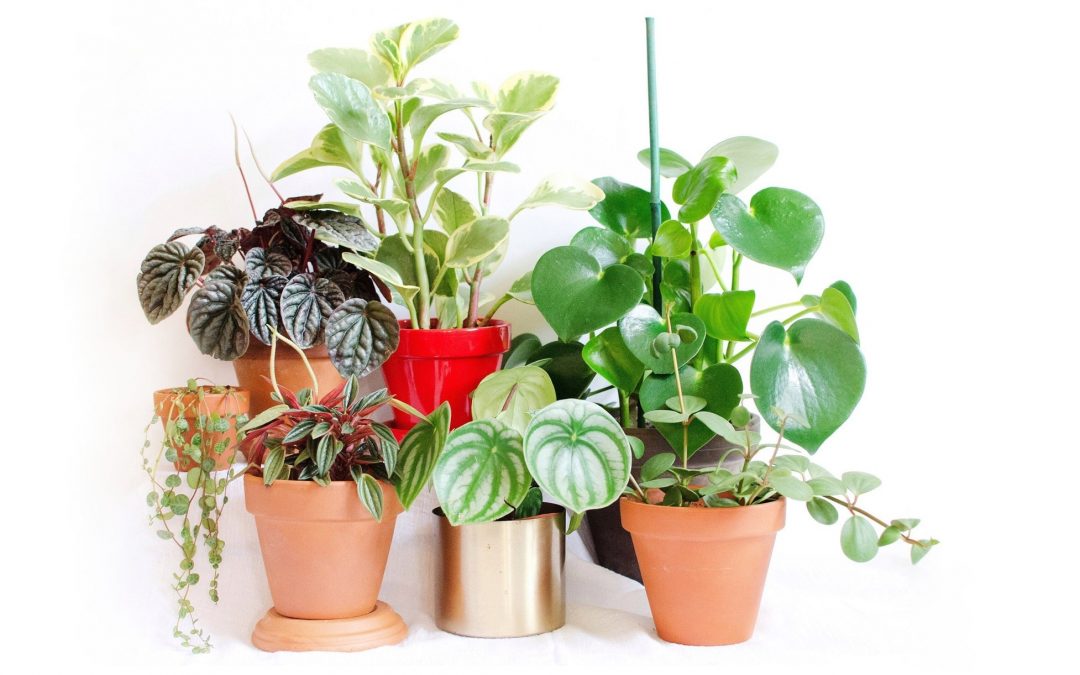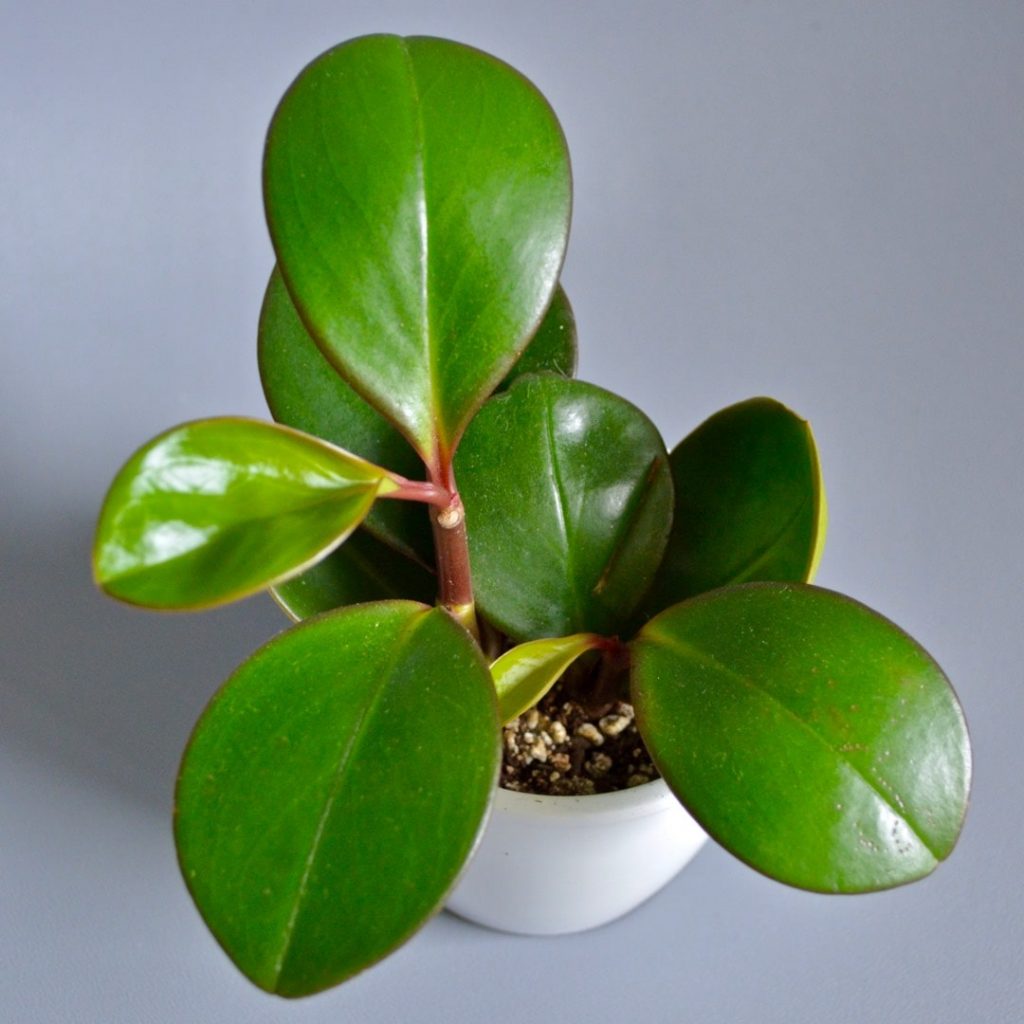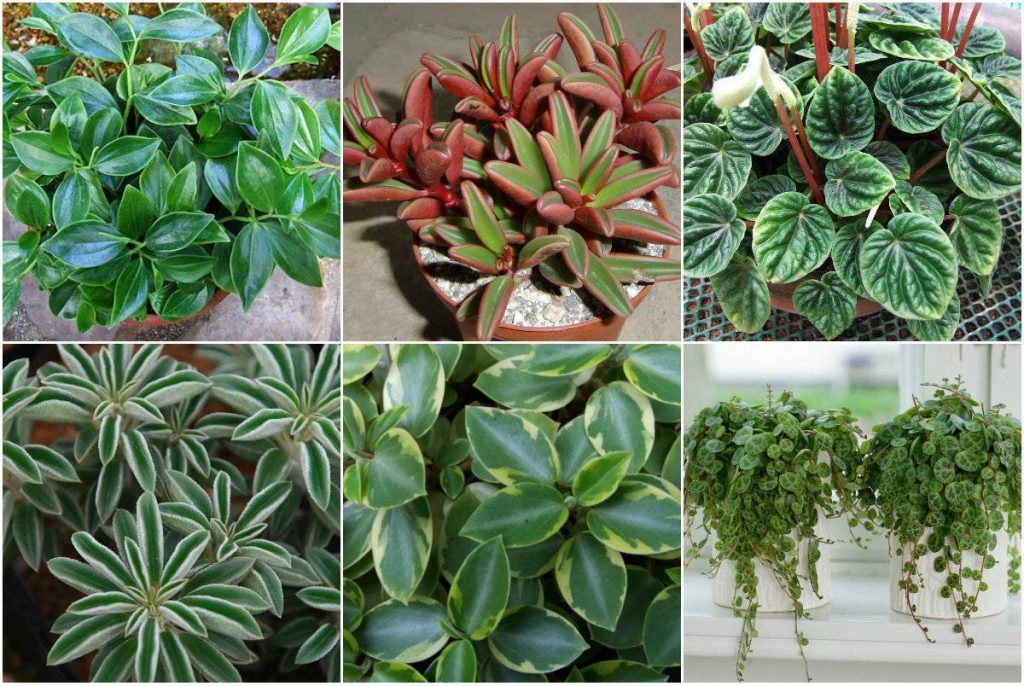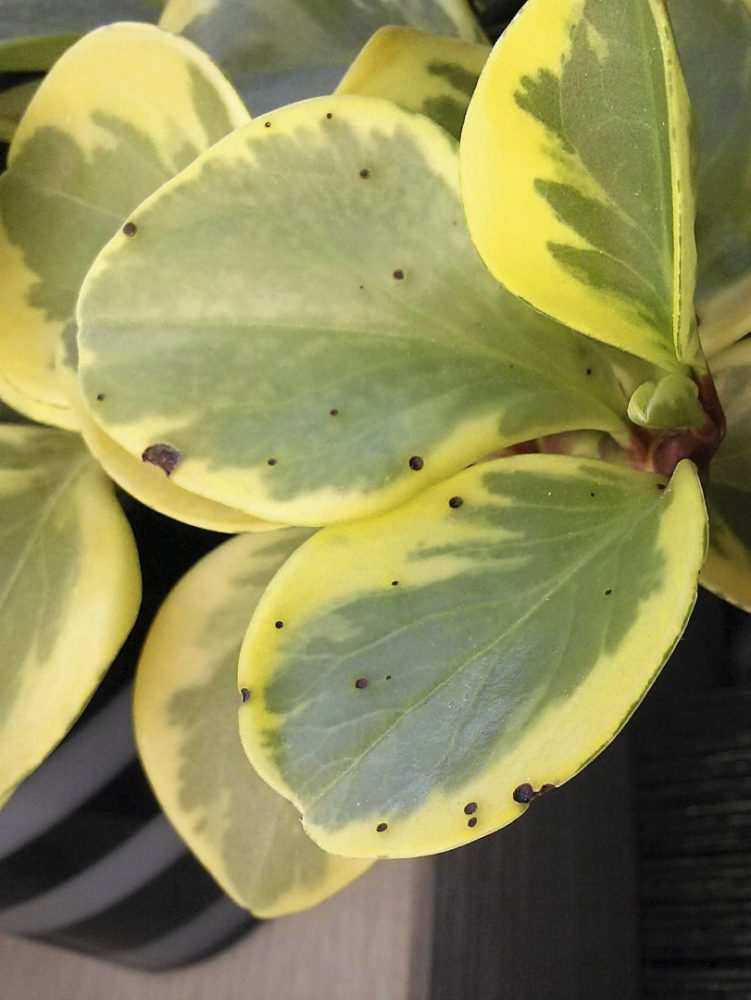Peperomia is a very popular indoor flower that even an inexperienced florist can grow on his windowsill. There are many Peperomia varieties, and all of them are beautiful in their own way, so let’s explore their diversity and find out what they need.
There are about 1000 Peperomia varieties in nature, all of them native to the warm forests of South America or Asia, preferring a stable warm climate.
In indoor culture, about 30 species are grown, which differ greatly in the shape of leaves and plant habitus. Some Peperomia varieties are bushy, creeping, compact, and relatively tall.
Peperomia flower does not require complex care and decorates the house all year round due to its beautiful fleshy leaves.
Table of Contents
Peperomia Varieties & Types
Here we have collected the Peperomia varieties and types that are most often grown in indoor conditions and are available for sale.
Peperomia obtusifolia
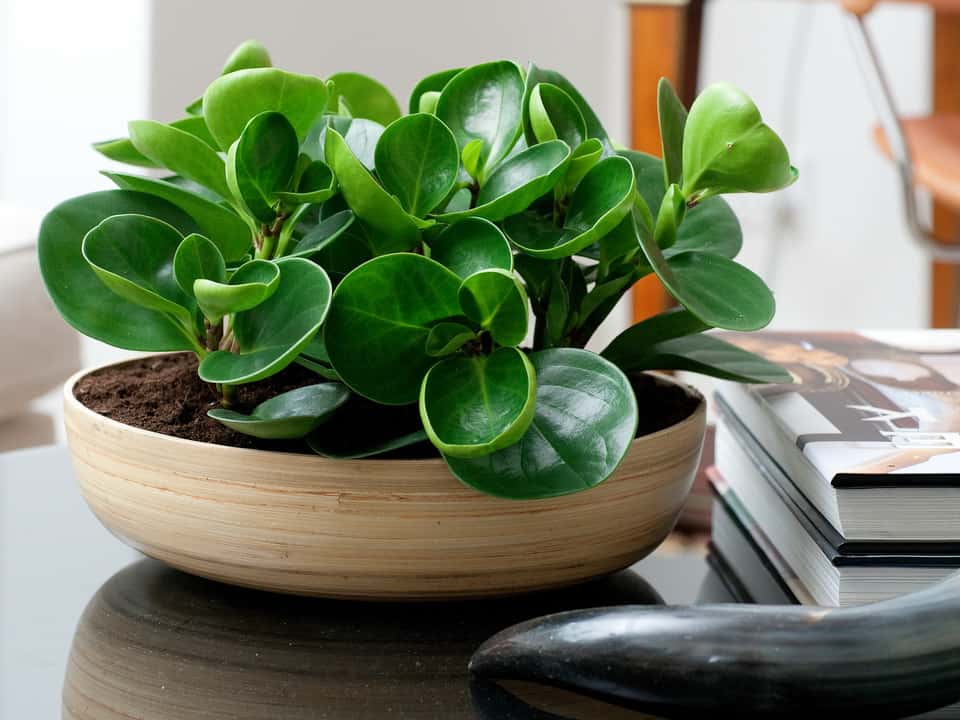
One of the popular Peperomia varieties and the most unpretentious, it is often used as a plant for offices and public places. The height of an adult plant is about 40 cm, the leaves are rounded, large, shiny, and of a rich dark green hue.
The stems of young plants are erect, but with age, they begin to creep. Peperomia varieties with variegated (striped and spotted) leaves are bred.
The most beautiful Peperomia varieties:
- Green Gold – with golden spots on the leaves;
- Lemon Lime – with a dark leaf center and yellowish-green edges;
- Golden Genua – with bright yellow marbling leaves.
Peperomia magnoliaefolia
(Peperomia magnoliaefolia). It is similar to Peperomia blunt-leaved, but differs in the shape of the leaves – they really resemble the leaves of a magnolia. Depending on the variety, the plant height varies from 20 to 50 cm.
Peperomia crinkled
(Peperomia caperata). Compact, up to 15 cm high, forms a neat rosette of heart-shaped leaves on single petioles. It owes its name to the texture of the leaf surface – because of the depressed veins, a recognizable “wrinkled” pattern is formed on it.

The color of the leaves is usually dark green, reddish on the reverse side. On sale, there are also some Peperomia varieties with red and pink leaves, spotted and edged.
This species has several interesting varieties:
- (Red Luna) Red Moon-with wine-maroon leaves and almost black veins;
- (Quito) Kvito – with bronze-burgundy leaves;
- (Schumi Red) Shumi Red – with maroon leaves;
- (Teresa) Teresa is a rare variety that has green leaves with silvery flecks on the upper side, and maroon leaves on the lower side;
- Napoli Nights – with smoky leaves and dark veins;
- (Abrikos) Apricot – it has dark green leaves with pinkish spots;
- (Rosso) Rosso – with rich green leaves with a bright red backside.

Peperomia climbing
(Peperomia scandens). Up to 20 cm high, with creeping stems that can cling to the support or hang down.
The leaves are small, rounded, and may have a pink tint. Variegate Peperomia varieties with light-edged or spotted leaves resembling Epipremnum leaves are popular.

Creeping Peperomia
The plant has a very unusual appearance with long, thin hanging or creeping shoots and very small (up to 1 cm) round leaves.
Often used as an ample plant, the type of creeping Peperomia resembles hanging threads of beads.
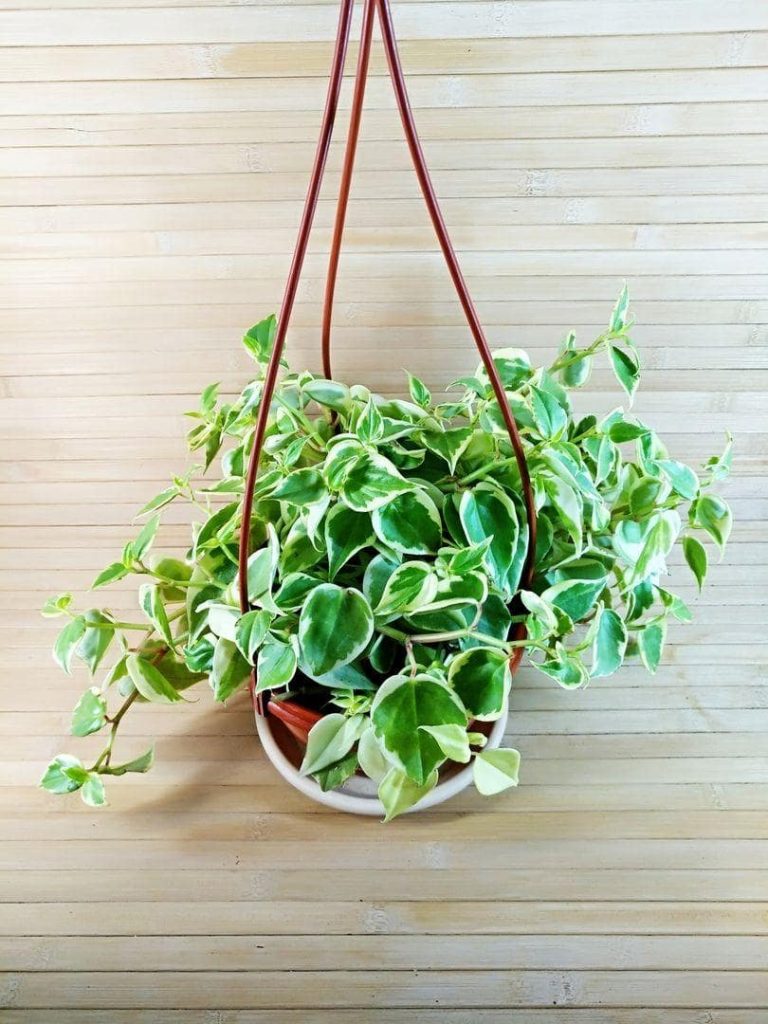
Peperomia clusiifolia
It reaches a height of about 50 cm and is distinguished by elongated leaves with characteristic colors: green in the middle, to the edges they acquire red, pink, and cream shades.
There are Peperomia varieties with green-yellow leaves and purple edging.
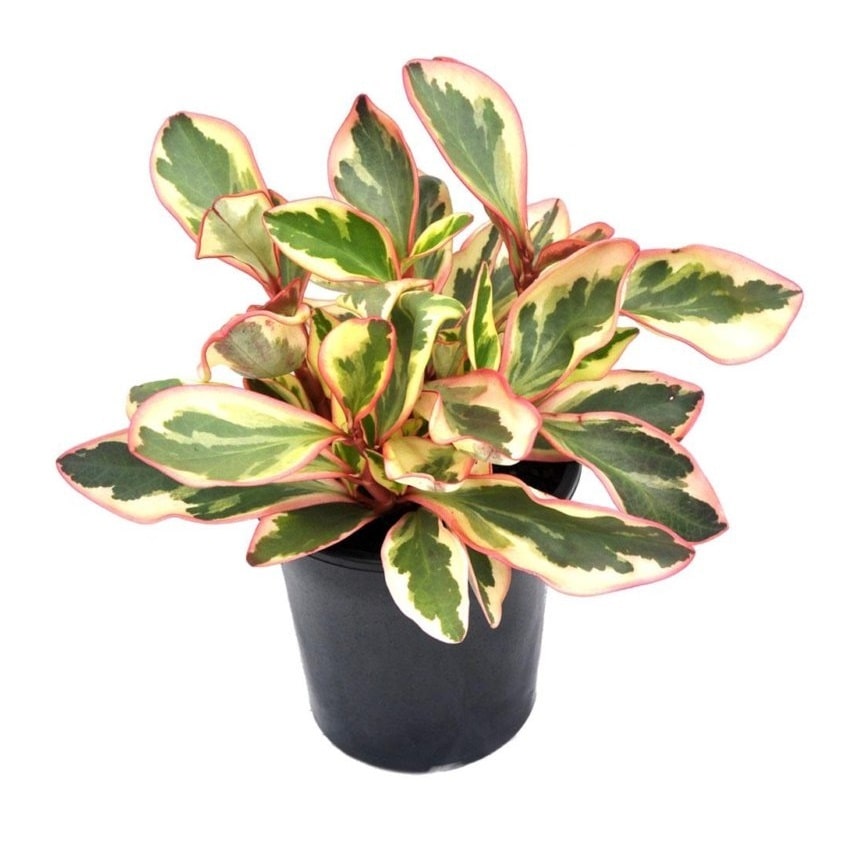
On sale most often you can find 2 Peperomia varieties:
- (Red Margin) Red Margin – with red leaf edges;
- (Ginny) Ginny – with creamy pink leaves.
Peperomia glabella
with shoots up to 50 cm long. The leaves are rounded, shiny, and bright green in color. Due to the abundance of leaves and numerous shoots, Peperomia glovata quickly forms a lush, dense green “cap”.

Peperomia graveolens
Succulent type of Peperomia. Up to 20 cm high. Externally, it is very different from previous Peperomia due to its characteristic succulent appearance.
The fleshy leaves of Peperomia graveolens are rolled up in” half-tubes ” along the length, their upper side is dark green, the outer side is red-maroon, and the stems are also reddish.
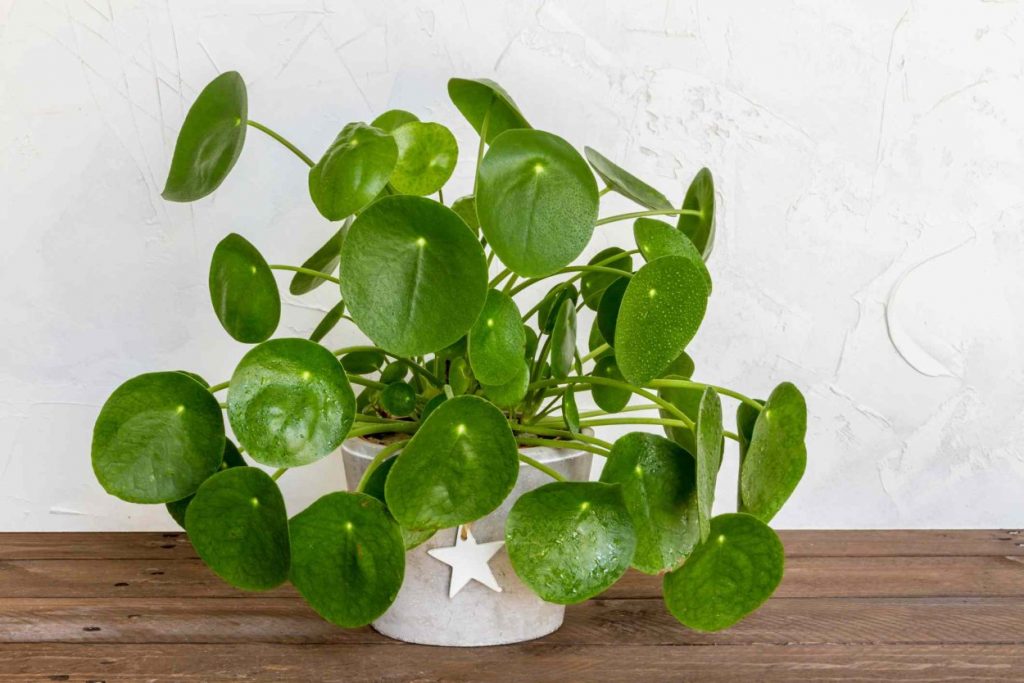
Peperomia dolabriformis
Another type of Peperomia flower is related to succulent. Height up to 50 cm. Another succulent type of Peperomia, similar to graveolens, but with green leaves and a more lush appearance.
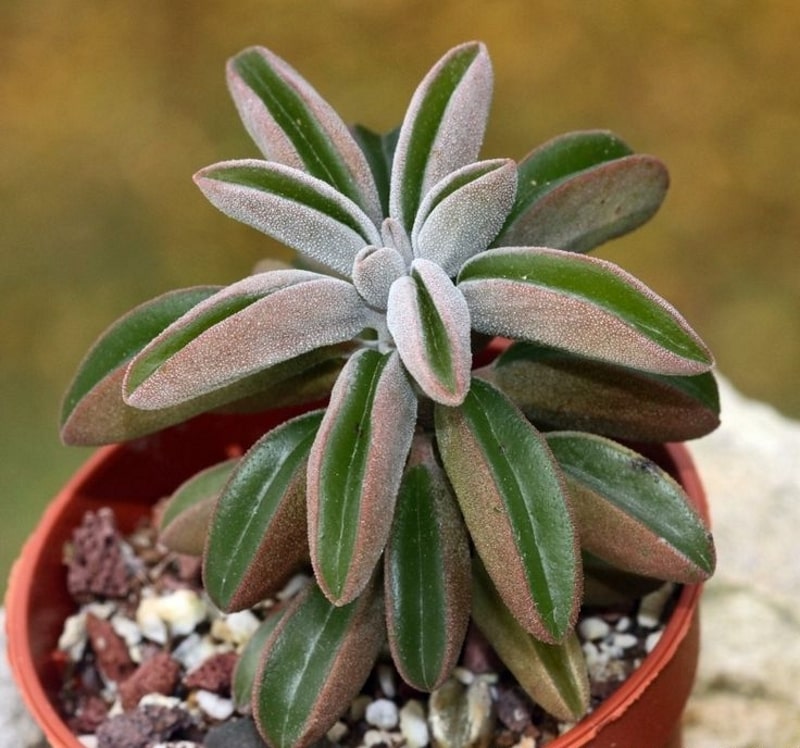
Among the popular varieties of this, Peperomia are::
- (Ferreyrae) Ferreira – with long leaves of rich green color (sometimes it is mistakenly attributed to the status of a species, but this is exactly the variety);
- (Happy Bean) Happy Bean – with narrow fleshy leaves that resemble bean pods in shape.
Peperomia columella
A plant with a very exotic appearance. Shoots up to 30 cm long look “scaly” because of the many densely planted small fleshy leaves. Adult shoots of Peperomia columnar can hang slightly, so it is sometimes used as an ample plant.
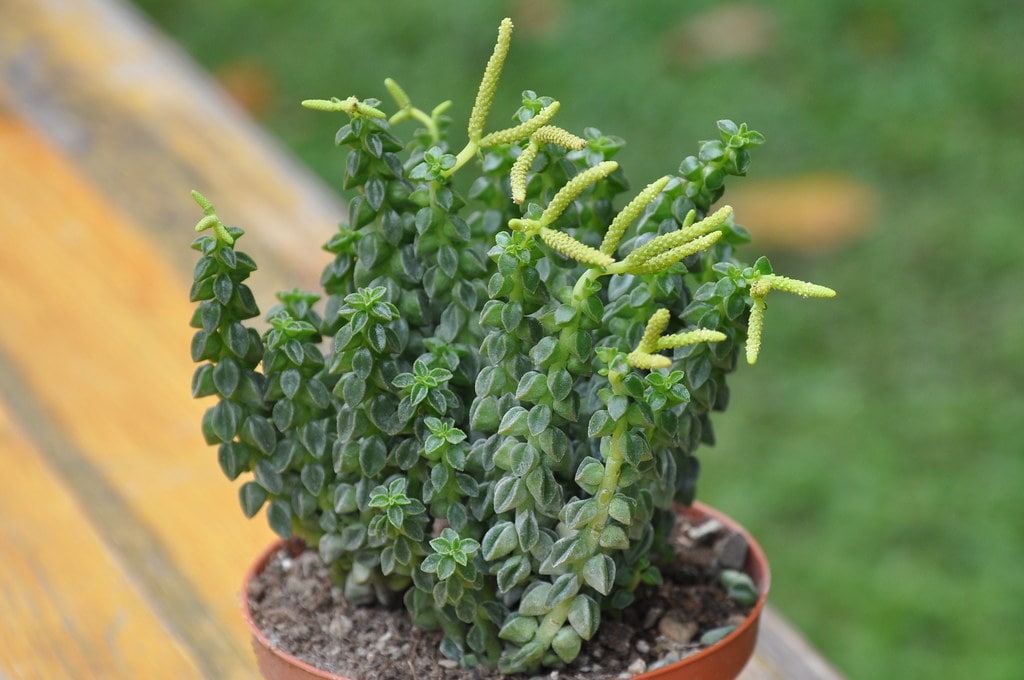
Peperomia varieties care at home
Peperomia varieties are easy to care for, and even novice florist can handle their maintenance, especially if they choose the most popular types that are guaranteed to feel good in an apartment.
Ground for peperomia
Peperomia prefers loose and light soils that do not retain water and allow air to pass through well. Ready-made store-bought mixtures for succulents or focuses are suitable, the most unpretentious Peperomia (for example, blunt-leaved Peperomia and wrinkled Peperomia) can also be planted in a universal soil for indoor plants, to which it is useful to add vermiculite.
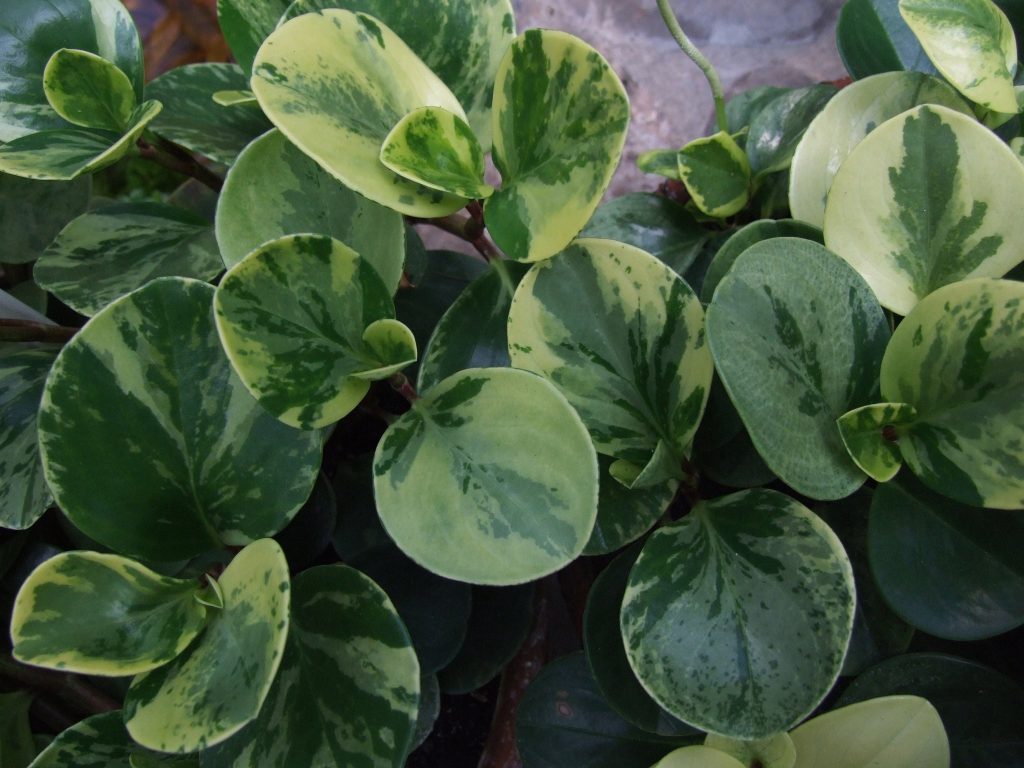
For Peperomia, good drainage is important – for this, it is best to use expanded clay, which should occupy at least 1/3 of the pot volume.
Lighting
Peperomia varieties need bright diffused light without direct, especially hot midday sun. The leaves of most Peperomia varieties are tender, so the rays can leave burns on them.
When growing in the southern or southeastern window, plants need to provide a little shading.
Green-leaved Peperomia varieties and cultivars can grow in low shade – for example, at a certain distance from a window. Varieties with red, yellow, and variegated leaves require constant bright light.
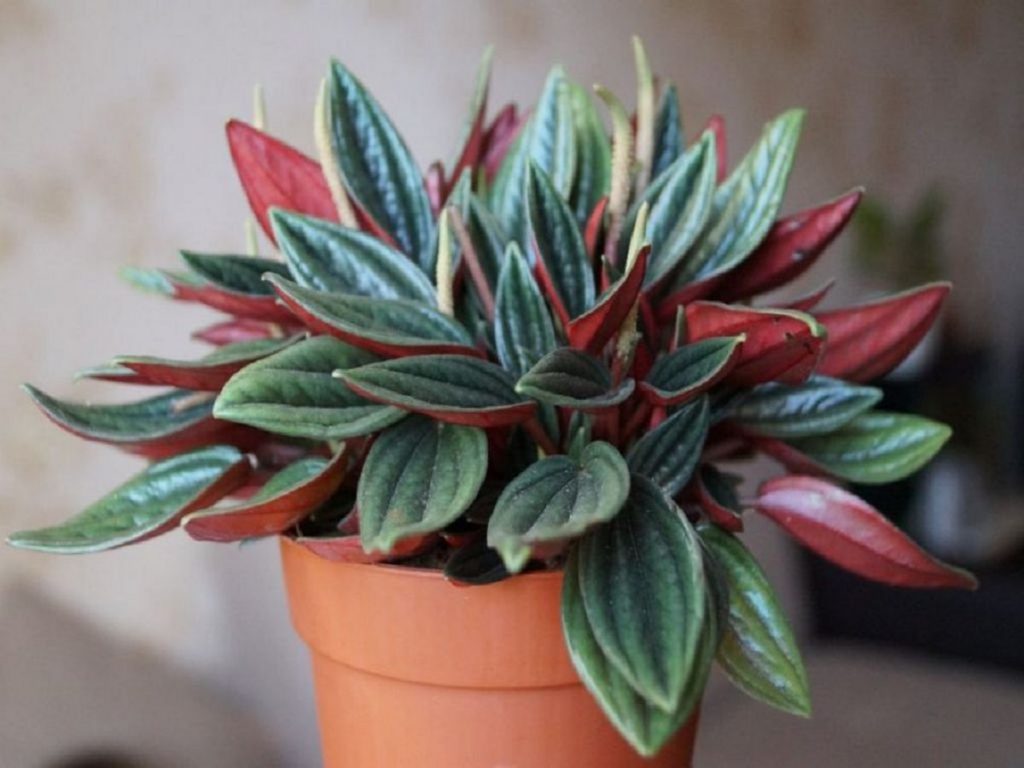
A sign of lack of illumination in Peperomia is leaf shredding, loss of brightness, elongation of shoots, and slowing down of growth.
According to the observations of flower growers, the lack of light is best tolerated by Peperomia blunt-leaved.
Humidity
Peperomia are mostly undemanding to air humidity, although in natural conditions they exist at a humidity of about 60%. Most of the year, the room humidity level is quite sufficient for them, but in winter and late autumn, it is advisable to spray the plants daily, since central heating dries the air very much.
If a humidifier is running in the room, no spraying is required. Succulent Peperomia varieties (graveolens, dolotovidnaya, columnar) are easier to tolerate the winter dryness of the air in apartments, so they can be sprayed less often.
Watering system
Peperomia is one of those plants that “it is better not to water than to pour”. In the warm season, plants are watered only after the soil dries out.
The stagnation of water in the pot and pan leads to root rot and plant death. In the cold season, watering is reduced to a minimum, no more than 1 time in 1-2 weeks.
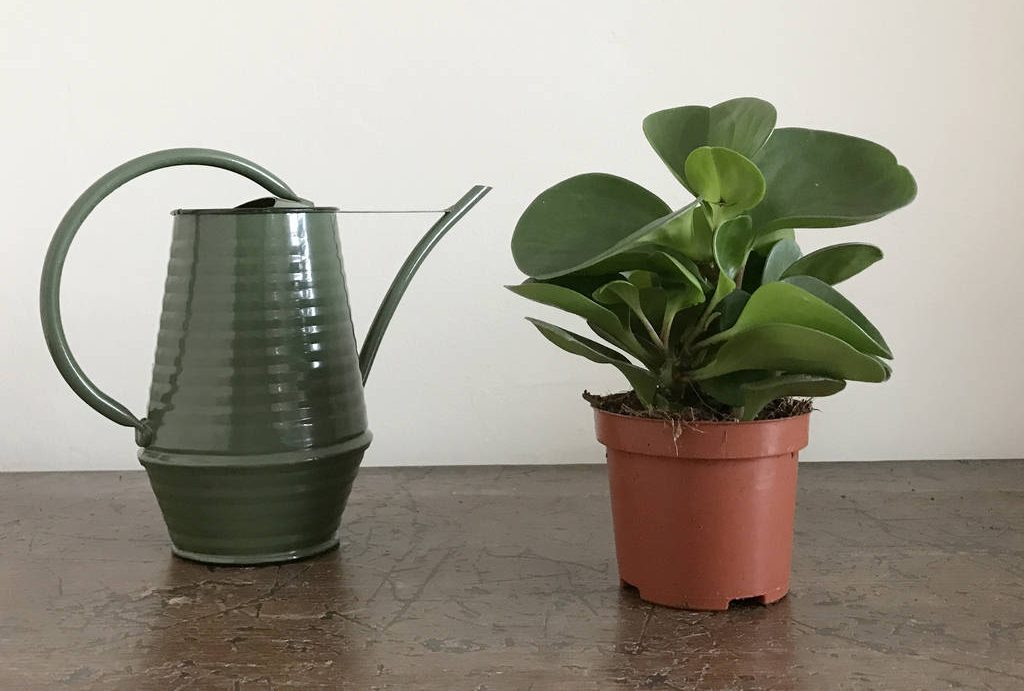
A sign of a lack of moisture in Peperomia is the loss of turgor in the lower leaves and their falling off, which can be used to determine the watering regime.
In the summer heat (at temperatures above 25 °C), Peperomia leaves can lose their tone and begin to fade-this is a reaction to the high temperature, and inexperienced growers often try to solve the problem with additional watering.
This should not be done: instead of moistening the soil, plants should be sprayed frequently.
Special care should be taken when watering succulent Peperomia varieties (graveolens, dolotovidnaya, columnar, and some others).: they are able to store moisture in their fleshy leaves, so excessive watering is especially harmful to them.
Water for watering Peperomia varieties should be settled, soft, and warm enough (not lower than room temperature).
In the cold season, it is not recommended to water Peperomia standing on the windowsill in the evening: at night, the temperature outside the window drops sharply, and because of the proximity to the cold glass, it is possible to hypothermia the roots of Peperomia.
Experienced flower growers recommend even putting a plank or any other material that insulates them from the cold windowsill under pots with peperomia for the winter.
Top dressing options for Peperomia varieties
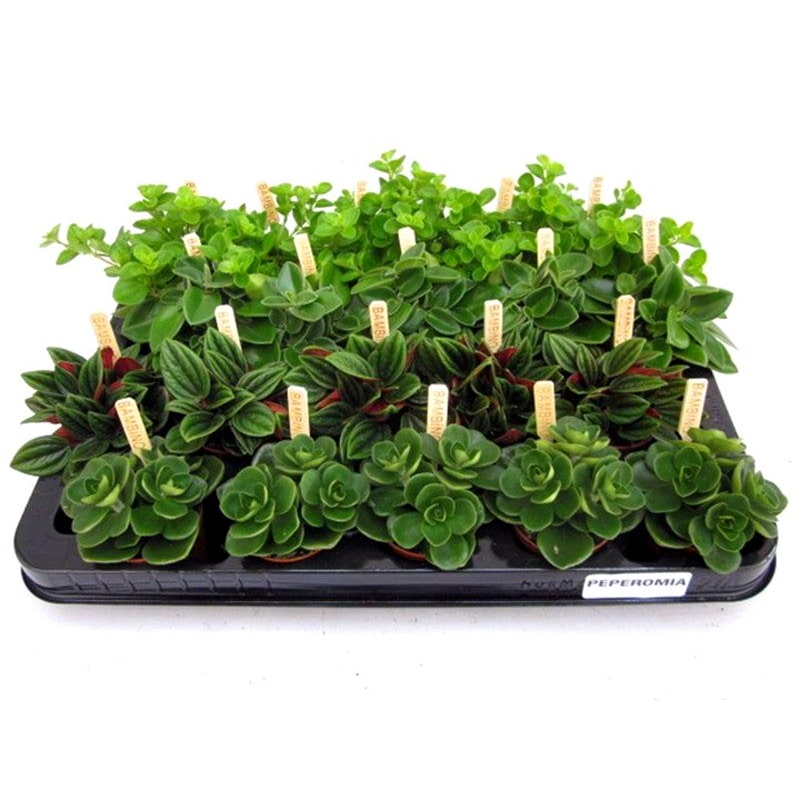
During the active growing season (approximately from April to the end of September), Peperomia is fed 2 times a month, succulent and small-leaved species-1 time a month.
Peperomia do not have a winter rest period, so in winter it is also necessary to apply a top dressing, but twice as often: 1 time a month.
Succulent Peperomia varieties in winter can not be fed or fertilized no more than 1 time in 2 months.
Diseases of Peperomia Varieties
With proper care, Peperomias are rarely affected by diseases, and the main cause of possible problems is excessive watering.
Root rot
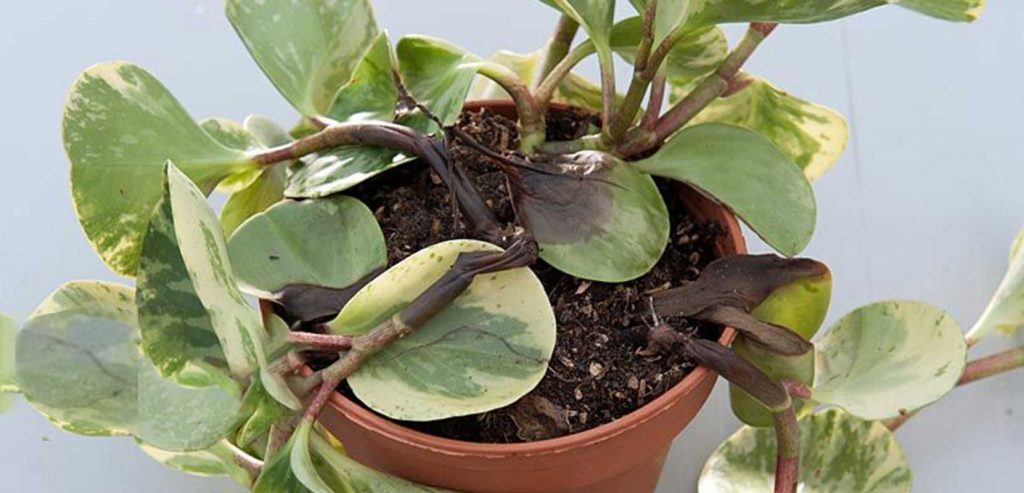
The main sign of a problem with the root system is the wilting of leaves throughout the plant (periodic death of old lower leaves is the norm).
If such a symptom occurs, you need to stop watering until the earthen lump dries out completely, and then transplant the plant into fresh soil.
When transplanting, you need to assess the condition of the roots and remove all affected by rot, and sprinkle the sections with powdered activated carbon. After transplanting into a new container, Peperomia varieties can be watered with any fungicide suitable for indoor plants.
Stem rot
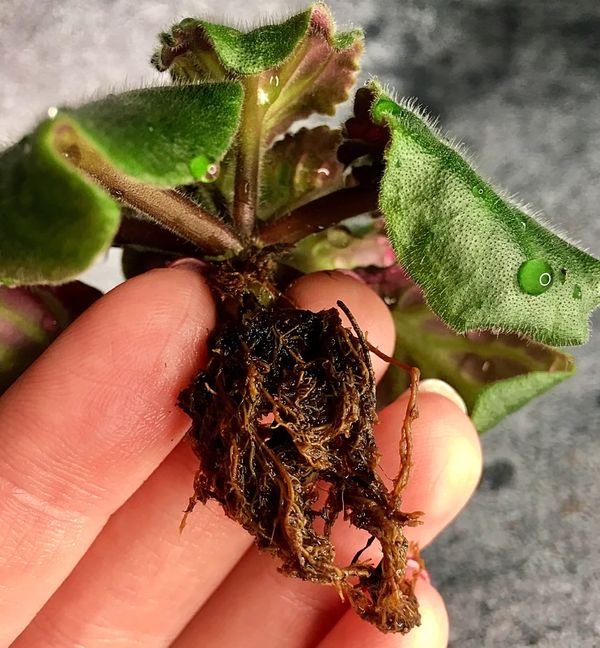
Often, excessive watering leads to rot of the stems or petioles: they darken and soften at ground level, and the leaves wither and easily separate from the plant.
If the lesion is small, drying the earthen lump and removing the affected parts helps. In case of severe damage, the algorithm of actions is the same as in the case of root rot: the Peperomia needs to be treated with a fungicide and transplanted.
Powdery mildew
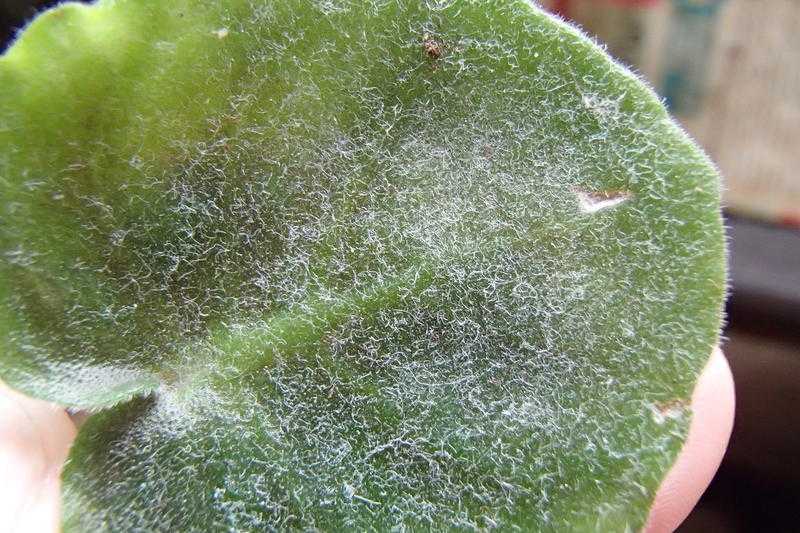
It can also occur with excessive watering. The main sign is a white coating on the leaves and shoots, similar to mold.
The drugs Quadris, Privent, Strobi, or Tiovit Jet will help to cope with the disease.
Peperomia Varieties pests
Peperomia is affected by common pests of indoor plants: spider mites, thrips, and mealybugs. Most often, plants that are kept in rooms with very dry air, do not receive proper care and fertilization, and get sick.
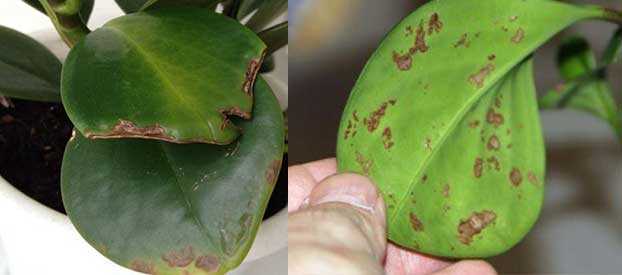
Regular spraying is not only a good way to maintain the desired humidity but also a simple prevention of pest damage. If they do appear, washing plants with household or special green soap can help in the early stages of the lesion.
If there are a lot of pests and the plant is badly damaged, only treatment with Actellic or Fitoverm preparations will help.
If thrips are affected, it is also recommended to replace the top layer of soil in the pot.
Your Questions about Peperomia Varieties
Q1: How to choose among the Peperomia varieties?
First of all, proceed from the conditions that you can provide to the plants.
Peperomia varieties with leaves of unusual bright colors require bright lighting, if it is impossible to provide it, it is better to stop at varieties with green leaves.
Easier to care for Peperomia blunt-leaved, magnolia-like, and wrinkled. Succulent Peperomia varieties are more whimsical.
Q2: What kind of pot is needed for Peperomia?
The container for planting Peperomia should be narrow and shallow. The root system of plants is shallow, so in a deep pot, Peperomia will not be able to master the entire volume of soil.
The large width of the container leads to the growth of roots in breadth to the detriment of the growth of the aboveground part of the plant.
A Peperomia flower pot must have several drainage holes.
Q3: Do Peperomia varieties bloom?
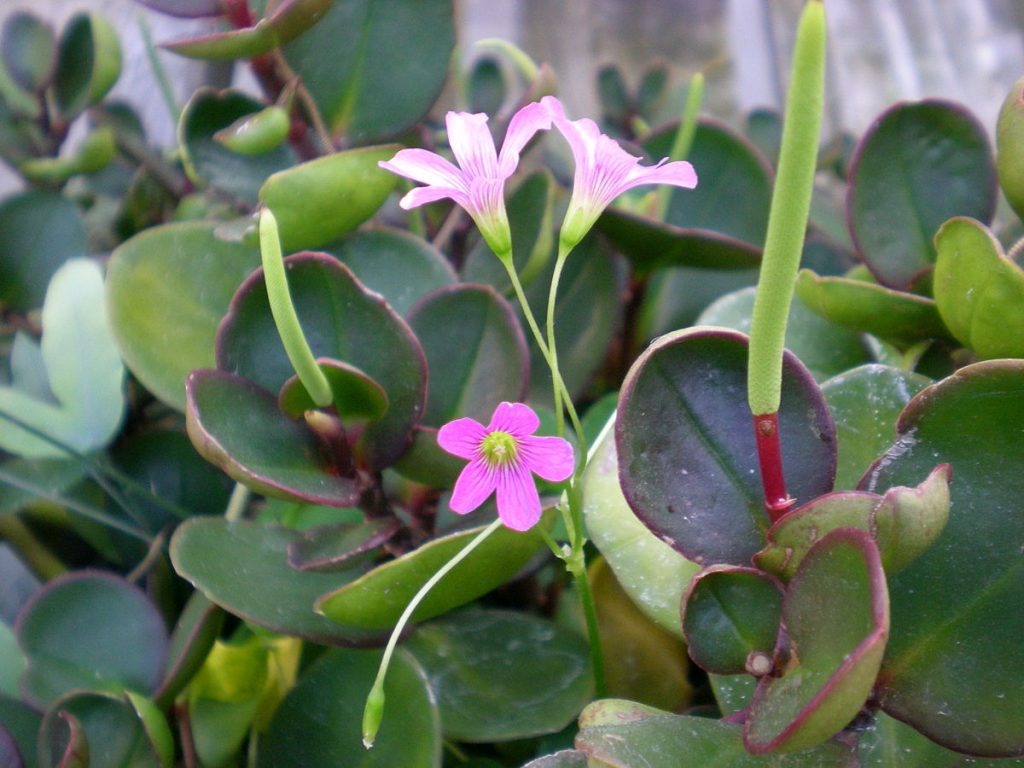
Almost all Peperomia varieties bloom, forming a not particularly decorative spike-shaped inflorescence on a long peduncle, resembling the inflorescence of plantain. It is usually whitish or yellowish-green, but it can be reddish in Peperomia varieties with red shades of leaves.
But! Flowering weakens Peperomia and leads to slower growth, so most flower growers prefer to remove the flowers and peduncles as soon as they appear.
Q4: What to do after the Peperomia has faded?
After the end of flowering, the peduncles are cut off. No special care is required after Peperomia blooms, the main thing is not to forget to feed it on schedule, since flowering takes a lot of energy and nutrients from the plant.
Q5: Why do Peperomia varieties turn yellow?
If Peperomia turns yellow and loses its leaves, there may be several reasons. The death of a certain number of old leaves is a normal phenomenon, they just need to be removed.
If the leaves lose their tone, turn yellow, and die off all over the plant, you need to make sure that the root system is in order and not affected by rot.
If the leaves turn yellow or rusty at the edges but do not fall off, the reason may be related to the conditions of maintenance: the plant is standing in a draft (for example, next to a window sash that is slightly open for ventilation) or there are frequent temperature changes in the room.
And finally, yellowing of the leaves can be a consequence of pest damage – the plants need to be well examined and, if necessary, taken measures.

